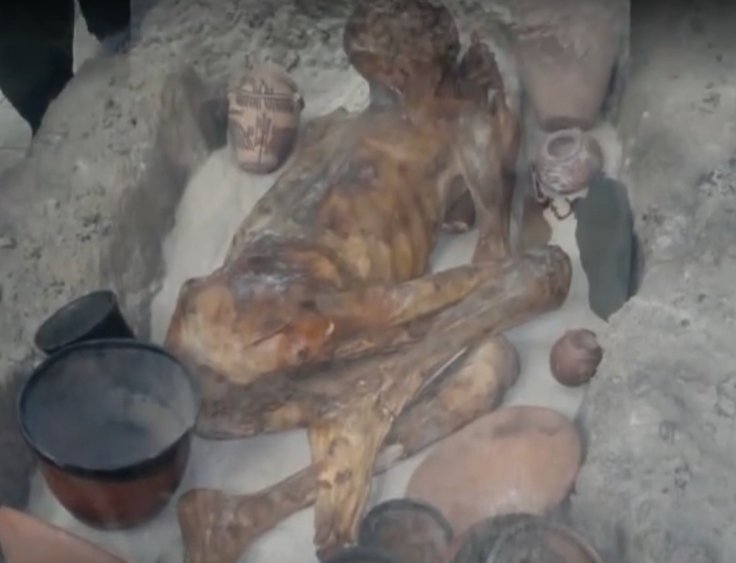
Renee Freidman, an archaeologist who has analyzed the hidden tattoos on a 5,500-year-old Egyptian mummy kept in the British Museum, has come out with shocking details which could have led to the death of the man who was apparently killed and mummified.
The researcher said that she observed some smudge in the arms of the mummy that made her curious about it. She believed that only female, particularly the dancing girls and mistresses bore tattoos in Egypt, so she did not expect anything else from the research on Gebelein Man, or 'Ginger', as he is known for the reddish hair. But in the research showed that not only female but men also were tattooed.
The ABC reported that in the late 1800s, the archaeologists found the curled up mummy. They were surprised to see that after so many years the skin and the physical feature of the Gebelein Man remained intact. Even previous CT scans revealed that the mummy has well preserved internal organs too. Later it was revealed that the body was mummified by the arid conditions of Egypt's Nile Valley after being stabbed in the back. Now Freidman's camera unveiled the tattoos of Barbary sheep and a wild bull on its arm.
Archaeologists also discovered a female mummy of a Gebelein Woman from the same location, with different types of tattoos. Dr Freidman said that these tattoos are unobservable with naked eyes.
The tattoo on the woman mummy's body included three mall s-shaped markings and a music clapper on her right shoulder and arm. She said that this finding will help the researchers to explore the pattern or design used during the pre-dynastic period, which could have started from c. 6000 CCE to 3150 BCE.
About the tattoos, she said, "It's not the nubile young things, the older women were tattooed. They were probably the wise women, and the tattoos were there to show their initiation into cult practices and their knowledge of medicine. It wasn't just meant for the gratification of men."
It has been two decades since the Hierakonpolis Expedition in Egypt was taken up by Dr Friedman. The area included the vast pre-dynastic city under the sand, which could have been one of the biggest urban centres of its time.
Another prehistoric archaeologist Aaron Deter-Wolf, who is also the author of Ancient Ink: The Archaeology of Tattooing said, "Infrared radiation is heat radiation, and it's very difficult to properly image the mummies without simultaneously cooking them."
But when researchers started to use the digital infrared cameras, which changed the imaging process, Deter-Wolf said, "We have the ability, with a stroke of a button, to change our understanding of tattooing in ancient Egypt."









